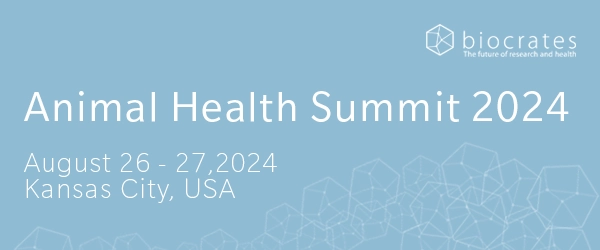The impact of intensive animal husbandry on livestock health and welfare
Industrial livestock farming is expanding worldwide as demand for meat and other animal products continues to increase. Herd size, room to roam, and feeding practices differ considerably from traditional animal husbandry, to maximize productivity per animal. This high-performance farming leads to massive health problems in livestock, including metabolic and infectious diseases. Improving the health of farm animals and early diagnosis of diseases extends their productive life span and reduces costs.
By providing a readout of the effect of exposure to different genetic and environmental conditions, metabolomics is a promising tool to predict, prevent, diagnose, and treat diseases in farm animals. Farmers can optimize the amount and composition of feed and supplements to avoid metabolic disorders and related infectious diseases, and increase fertility and breeding success. Production traits such as growth rate, fat deposition, and milk yield and quality can be maximized. It may also be possible to reduce the need for antibiotics, which reduces costs and improves product quality for the end consumers. Overall, metabolomics is essential for advancing sustainable, productive animal husbandry and welfare by contributing to the assessment of farm animal health.
A link between feeding and diseases
Over-conditioning of dairy cows due to grain-rich feeding in industrial farming causes severe diseases, including fatty liver, diabetes, and mastitis as a sonsequence of chronic inflammation and immune deficiency. Early metabolic changes such as increased circulating levels of branched-chain amino acids, lipids, and tryptophan metabolites, and reduced levels of biogenic amines, are frequently detectable even before onset of the disease.
This applies not only to cows, but also to other animals and humans, which highlights the extensive conservation of key metabolic pathways across species (Peregrín-Alvarez et al. 2009), and speaks to the direct relationship between animal and human health. Hence, human health profits from the understanding, detection, and curation of metabolic diseases in animals, and vice versa. The interdisciplinary “One Health” initiative (One Health: It’s for All of Us 2021) aims to integrate and translate knowledge between studies on animal, human and ecosystem health.
One of the most common cattle health issues resulting from grain-rich feeding is acidosis. The accumulation of acids in the rumen leads to dysbiosis of the gut microbiome, increased rumen permeability, and systemic inflammation (Nagaraja et al. 2007). Animals suffering from chronic inflammation or metabolic disorders are more susceptible to infections due to an impaired immune response. Early detection and treatment of inflammation and metabolic diseases can prevent subsequent infections.
Mastitis, the inflammation of the udder caused by infection of the mammary gland, is the second most important reason for culling of dairy cows with a very high economic impact (Zwierzchowski et al. 2020). Indeed, cows affected with subacute ruminal acidosis (SARA) have been shown to exhibit higher levels of acute phase protein and altered plasma metabolomes when experiencing acute mastitis (Humer et al. 2018).
Fatty liver impairs health status, decreases productivity, reduces fertility, and shortens the lifespan of farm animals. Despite the high prevalence and economic burden of hepatic lipidosis, only biopsy has been proven as a reliable diagnostic tool. However, identification of novel metabolic biomarkers in urine, feces, or blood would be a non- or minimally invasive way to improve the prevention or diagnosis of disorders like fatty liver. In dairy cows, a panel of 29 serum metabolites was shown to differentiate healthy controls from subjects with different disease states of hepatic lipidosis (Imhasly et al. 2014). Subjects with fatty liver disease had decreased levels of glycine, glutamine, and almost all phosphatidylcholines and sphingomyelins.
How to use metabotypes
The metabolome holds information about how different biochemical pathways respond to dietary or environmental conditions. With this information, individuals can be grouped based on similarities in their metabolic phenotype. This practice is referred to as metabotyping.
For example, a study from 2016 found that a novel metabotype of periparturient cows, characterized by long-chain acylcarnitines and biogenic amines, is associated with a productive life span. Increased levels of carnitine and acylcarnitines may indicate properly functioning mitochondria, while reduction of the kynurenine/tryptophan ratio along with higher levels of carnosine, sarcosine, and spermidine point to anti-inflammatory, anti-oxidative, and anti-ageing states (Huber et al. 2016). Identifying biomarkers of metabotypes in this way can help to predict the risk of metabolic dysfunctions and select appropriate interventions to extend the productive life of farm animals.
Metabotyping has also been used to identify screening markers for postpartum ketosis risk in dairy cows. Ketosis is a metabolic disease with a prevalence of up to 40% in dairy cows, and causes vague clinical symptoms like anorexia, loss of body condition, and impaired productiveness. The formation of ketone bodies, including acetone, acetoacetate, and beta-hydroxybutyrate, reflects the hepatic conversion of circulating free fatty acids into glucose via gluconeogenesis.
Characterizing metabolic patterns in dairy cows revealed several metabotypes, based on changes in amino acids, glycerophospholipids, sphingolipids, acylcarnitines, and biogenic amines in serum of prepartum dairy cows that developed ketosis after parturition. (Zhang et al. 2017). Two sets of predictive biomarker models and one set of diagnostic biomarkers with high sensitivity and specificity were identified, providing new insights into the pathology and diagnosis of ketosis.
Finding alternative feeding strategies to improve animal health
To avoid feeding-related metabolic and infectious diseases, the farming industry needs alternatives to conventional feeding practices. Considering that the metabolome directly reflects feed intake and physiological processes, discovery of metabolic biomarkers associated with health and productivity are key to find appropriate feeding alternatives (Hao et al. 2021). A study in growing pigs showed that partial or complete replacement of a conventional protein source by insect meal feeding does not have any adverse effects on the metabolism (Meyer et al. 2020).
Implications for pet health
In accordance with the One Health concept, companion animals suffer from the same lifestyle-related problems as farm animals and humans, due to a combination of overfeeding and reduced physical activity. In fact, more than 50% of cats and dogs in the US are overweight or obese. Importantly, obesity enhances the susceptibility for severe metabolic disorders like diabetes, which impair life quality and shorten life span. Analysis of saliva from obese dogs revealed a strong association between 27 metabolites and insulin resistance. Thus, the salivary metabolome is a valuable source of biomarkers for obesity, insulin resistance, and related complex conditions (Muñoz-Prieto et al. 2021).
Furthermore, metabolites, especially those of the gut microbiome, are important mediators of the gut-brain and gut-immune axis. Modulating the interaction between these organs might improve chronic inflammatory states. Inflammatory bowel disease (IBD) is a chronic gastrointestinal inflammation, leading to diarrhea, vomiting, and weight loss. Hydrolyzed diet alone or in combination with pre- and probiotics significantly increased lipids in serum of dogs with IBD, leading to the amelioration of clinical signs (Ambrosini et al. 2020). Finally, various factors of pet health, from dietary interventions over microbiome to pharmacological treatments can be monitored by metabolomics.
If you want to gain a complete picture of health and disease in livestock and companion animals, have a look at the different application areas of metabolomics or continue to read on animal health.
References
Ambrosini Y. et al.: Treatment With Hydrolyzed Diet Supplemented With Prebiotics and Glycosaminoglycans Alters Lipid Metabolism in Canine Inflammatory Bowel Disease. (2020) Frontiers in Veterinary Science | https://doi.org/10.3389/fvets.2020.00451
Hao D. et al.: Overview of Metabolomic Analysis and the Integration with Multi-Omics for Economic Traits in Cattle. (2021) Metabolites | https://doi.org/10.3390/metabo11110753
Huber K. et al.: Metabotypes with properly functioning mitochondria and anti-inflammation predict extended productive life span in dairy cows. Scientific Reports, 6, 24642. | https://doi.org/10.1038/srep24642
Humer E. et al.: Innate immunity and metabolomic responses in dairy cows challenged intramammarily with lipopolysaccharide after subacute ruminal acidosis. (2018) Animal | https://doi.org/10.1017/S1751731118000411
Imhasly S. et al.: Metabolomic biomarkers correlating with hepatic lipidosis in dairy cows. (2014) BMC Veterinary Research | https://doi.org/10.1186/1746-6148-10-122
Meyer S.et al.: Comprehensive evaluation of the metabolic effects of insect meal from Tenebrio molitor L. In growing pigs by transcriptomics, metabolomics and lipidomics. (2020) Journal of Animal Science and Biotechnology | https://doi.org/10.1186/s40104-020-0425-7
Muñoz-Prieto A. et al.: Evaluation of Changes in Metabolites of Saliva in Canine Obesity Using a Targeted Metabolomic Approach. (2021) Animals : An Open Access Journal from MDPI | https://doi.org/10.3390/ani11092501
Nagaraja T. et al.: Acidosis in feedlot cattle. The Veterinary Clinics of North America. (2007) Food Animal Practice | https://doi.org/10.1016/j.cvfa.2007.04.002
One Health: It’s for All of Us (2021) FDA | https://www.fda.gov/animal-veterinary/animal-health-literacy/one-health-its-all-us
Peregrín-Alvarez J. et al.: The conservation and evolutionary modularity of metabolism. (2009) Genome Biology | https://doi.org/10.1186/gb-2009-10-6-r63
Zhang G. et al.: Metabotyping reveals distinct metabolic alterations in ketotic cows and identifies early predictive serum biomarkers for the risk of disease. (2017) Metabolomics | https://doi.org/10.1007/s11306-017-1180-4
Zwierzchowski G. et al.: Mass-spec-based urinary metabotyping around parturition identifies screening biomarkers for subclinical mastitis in dairy cows. (2020) Research in Veterinary Science | https://doi.org/10.1016/j.rvsc.2020.01.001







